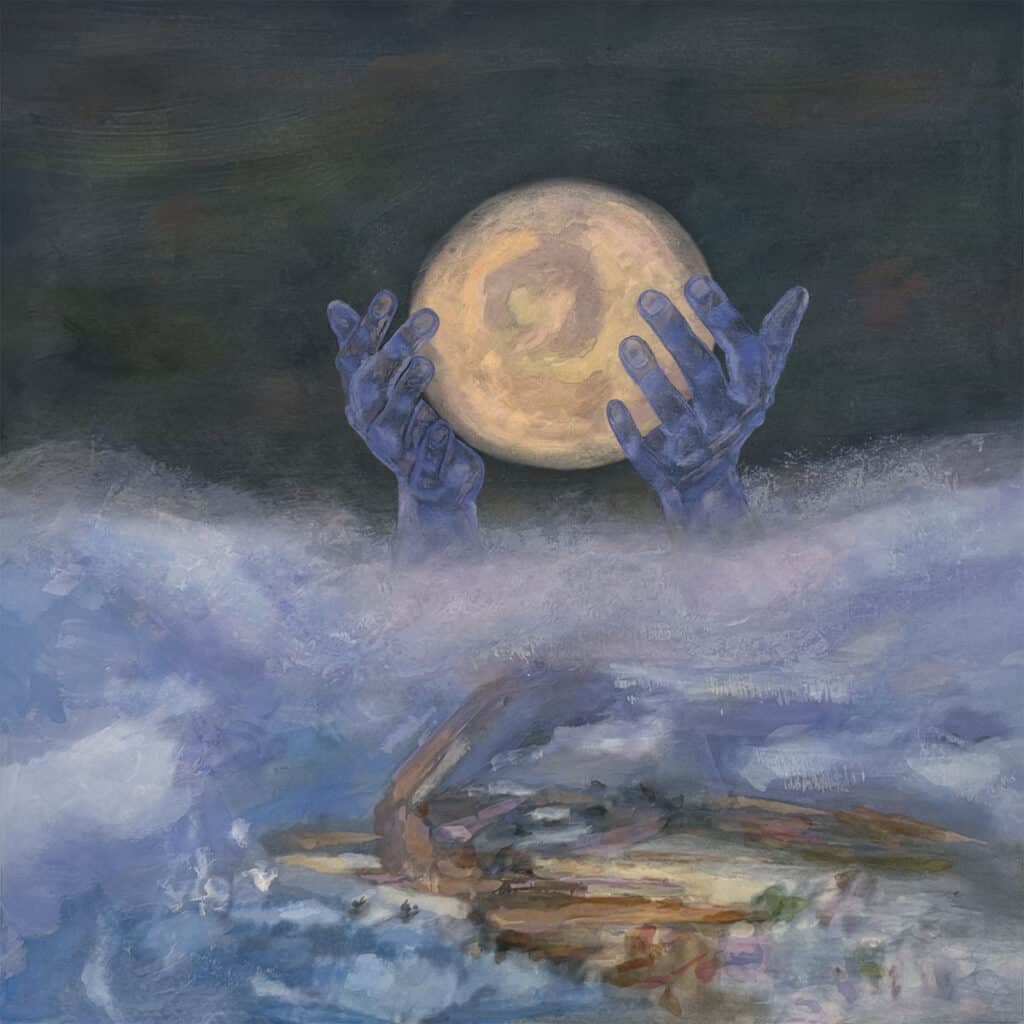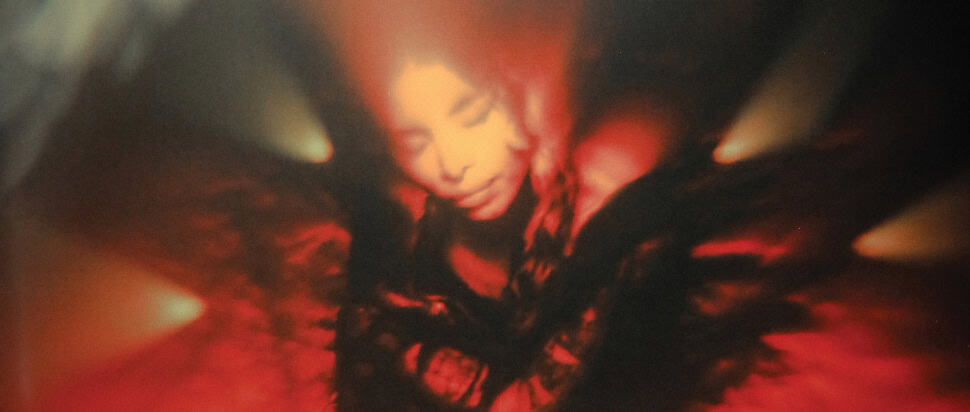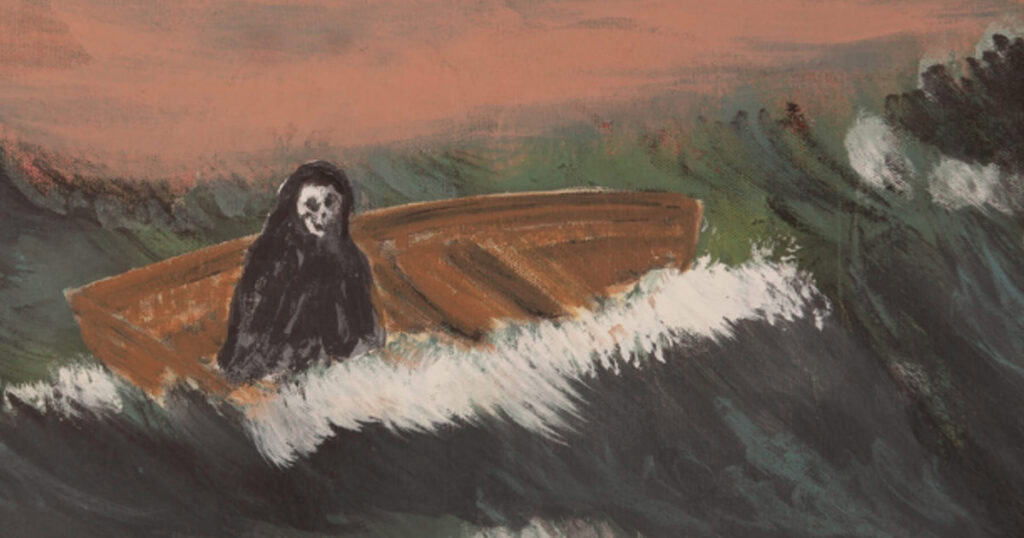Whilst easily their best work post-reformation, Beneath the Eyrie is still a plodding, repetitive, dull work by a band who used to mean more.
Any band with a legacy or reputation that involves dramatically rewriting an entire musical genre in their earliest days is going to eventually be forced to grapple with the question of what their continued existence means as they get older. Truth is that such designations are often albatrosses around the necks of otherwise strong dependable musical artists whose work is often unfairly denigrated or compared to their earlier landmarks and everyone should be given the opportunity to experiment and push their sound in different directions. But just as often there are the bands who continue to putter around long after their day would seem to be due, putting out subpar records only the most hardcore of fans will ever listen to more than thrice and which fly in the face of the legacy and image which made their name.
This is where Pixies have found themselves for the past six years. Following their unlikely reuniting in 2004 and eventual decision to (sans bassist Kim Deal) start making new music again in 2013, the band have now lasted longer as a music-making outfit during this reformation than they did in their original late-80s/early-90s. Pixies used to be dangerous, transgressive, forceful. Black Francis would screech about environmental devastation, incest, and the horrors of the University of Massachusetts whilst drummer David Lovering pounded the drums for dear life and lead guitarist Joey Santiago manipulated surf-rock clichés into something bitter and jagged and at times barely even musical. Their songs rarely passed the three-minute mark, unexpected chord changes could upend a track’s structure at any moment, and their quiet-LOUD-quiet formula on game-changing records Surfer Rosa and Doolittle is almost singlehandedly responsible for alt-rock as we know it. Their music was so combustible that even the band couldn’t last, dissolving in 1993 amid bitter infighting.
Expecting 20 years older versions of Francis, Lovering, and Santiago (plus new bassist Paz Lenchantin) to recapture the danger and energy of their earlier work is obviously a fool’s cause, but whilst that snarl and terror was x-factors in the band’s near-perfect original discography they weren’t the whole story. Strip away those forceful performances and you still have a bunch of weird, interesting, extremely strong songs that can (usually) sound fantastic regardless of who’s playing them. And that’s what has been the massive Achilles’ heel of Pixies v. 2.0. It’s not just that a band who once assaulted the listener for their attention and aimed to unsettle like a great horror story started making music that sounded cowed, plodding, adrift. It’s that they started writing songs which ranged from forgettable rehashes of their brighter days (most of 2016’s Head Carrier) to active crime scenes of musicianship (the lowest lows of 2014’s EP compilation Indie Cindy).
Which brings us to Beneath the Eyrie, officially the band’s seventh studio album, a frequently boring and ephemeral record which I have listened to in the dozens of times for this review and yet could not hum you a single bar from memory no matter what incentive you placed in front of me. Still, it does at least find the quartet trying to avoid repeating the mistakes of Head Carrier by pushing their sound in new directions. There are still plenty of Pixian touchstones about the record – Francis is still lyrically heavily preoccupied with death and sinners, whilst ‘St. Nazaire’ goes all-in on the surf-rock vibes – but there’s this late 1800s’ gothic tinge to the entire album that evokes Boatman’s Call-era Nick Cave or stretches of Tom Waits, most especially in ‘This is My Fate’ which is borderline a drinking song, as well as instances where the music veers near-enough into an approximation of country.
Eyrie has also been produced, in stark contrast to almost everything this band has put out to now, which often sounded sandblasted straight to tape with minimal overdubs or production tweaks. Not to say they weren’t there – Doolittle caused a stir by employing the minor gloss of late-80s R.E.M. production, and tracks on Indie Cindy like “Andro Queen” had minor Pro Tools vocal and chopping effects – but they weren’t as obviously calling attention to themselves as they do here. Producer Tom Dalgety (who handled Carrier) adds harpsichord accentuations to opener “In the Arms of Mrs. Mark of Cain,” polishes tracks like “On Graveyard Hill” to a mirror-shine that includes a whoosh effect on the builds to choruses, and slathers on the atmospherics for pieces like “Silver Bullet.” There’s a kinship to Sleater-Kinney’s The Center Won’t Hold (released last month) as a result, also a produced record from a band who normally go raw, rough and ready.
But whilst that album’s production did arguably hamper the results somewhat, it also just as equally worked in simpatico with the songwriting to enhance the base music in ways that could just make those songs soar even higher than they already did. By contrast, whilst none of Dalgety’s production choices hamper the songs, they aren’t able to enhance them either because the base songwriting is too uninspired for additions like the ticking clock over ‘Silver Bullet’s intro to do more than very briefly distract. So few of the songs here stick out in any lasting way and many run the risk of sounding near-identical to one another, two of them have the exact same intro (drawn out reverbed guitar chord plus minor-key muted lead plucking as Lovering taps on his ride cymbal for 8 bars) and are sequenced one after the other on the tracklist in a manner which repeatedly caused me to check I hadn’t accidentally hit repeat on the first of the two.
What separates gothic campfire singalong ‘Bird of Prey’ from gothic campfire singalong ‘Death Horizon?’ Not a whole lot, frankly. The middle stretch post-‘Fate’ blurs into an indistinct haze and the whole album feels way longer than its modest 12 track sub-40 minute runtime. Worse, Black Francis sounds borderline bored delivering some of these songs. I’m not even asking for the snarl and screaming fury of Young Black Francis to come back, although he does try to revive that spirit on ‘St. Nazaire,’ but many of these songs feature performances from one of alt-rock’s most charismatic voices that seem to be utterly disinterested, getting tangled and mangled on the inelegant melodies of ‘Mark of Cain’ and sleepwalking through ‘Ready for Love.’
Admittedly, Eyrie is not a bad record, there’s no ‘Blue Eyed Hexe’ or ‘Um Chagga Lagga’ poisoning its tracklist. There’s a baseline level of competency and pleasantness throughout which doesn’t offend. ‘Graveyard Hill’ is a solid slice of typical Pixies, ‘Long Rider’ has the album’s better lyrical moments and its best hook – Paz co-writing and singing lead on a tribute to a friend of hers who died surfing, “she wiped out in the modern sense” – Paz in general is coming into her own in the band with some great harmonies and driving bass work, and ‘Daniel Boone,’ about dying in a night-time backroad car accident, is a quality effective closer… only for it to not actually be the album’s closer – track sequencing on this thing is a mess. Eyrie doesn’t safely rehash prior highs like Head Carrier and won’t make longtime listeners bewilderedly go “what the fuck are these guys doing?” like Indie Cindy did. It’s ok, inessential and dull, which is apparently the best we can hope for in a Pixies record in 2019.
So, that brings us back to our opening conundrum. Is it fair to hold those first four Pixies albums against them when rating their new works? They, after all, are not the same band they were 28 years ago and at least this go around they’re not completely trying to be. They can’t summon that fire, that venom, that hunger, that danger again, so is it unreasonable to hold that against them? Would I be kinder to Beneath the Eyrie if the exact same album were by an entirely different upstart band or even these exact same four musicians but going under a different name? Honestly, perhaps. I can’t deny that, as someone for whom being turned onto that legendary initial run as I entered Sixth Form was a major keystone in my music history and expanding taste, it pains me to hear a band once so commanding and vital churn out works that so easily fade into the background even when I try listening intently, so maybe I would be kinder under those aforementioned circumstances.
But would we be devoting column inches to Beneath the Eyrie at all if it didn’t come with that Pixies logo slapped onto the front cover? Given how uninteresting and samey the music featured within is, and how many other vastly more exciting and unique alt-rock albums get released each week nowadays, I highly doubt it. Like I said, band legacies are a blessing and a curse.






